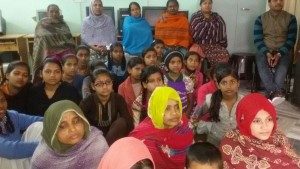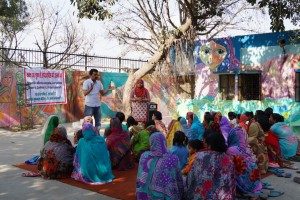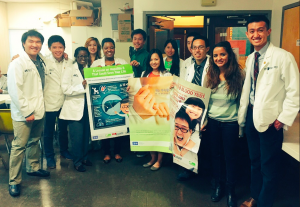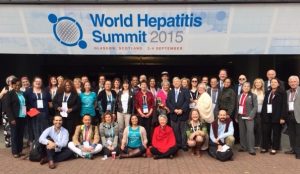By Beatrice Zovich
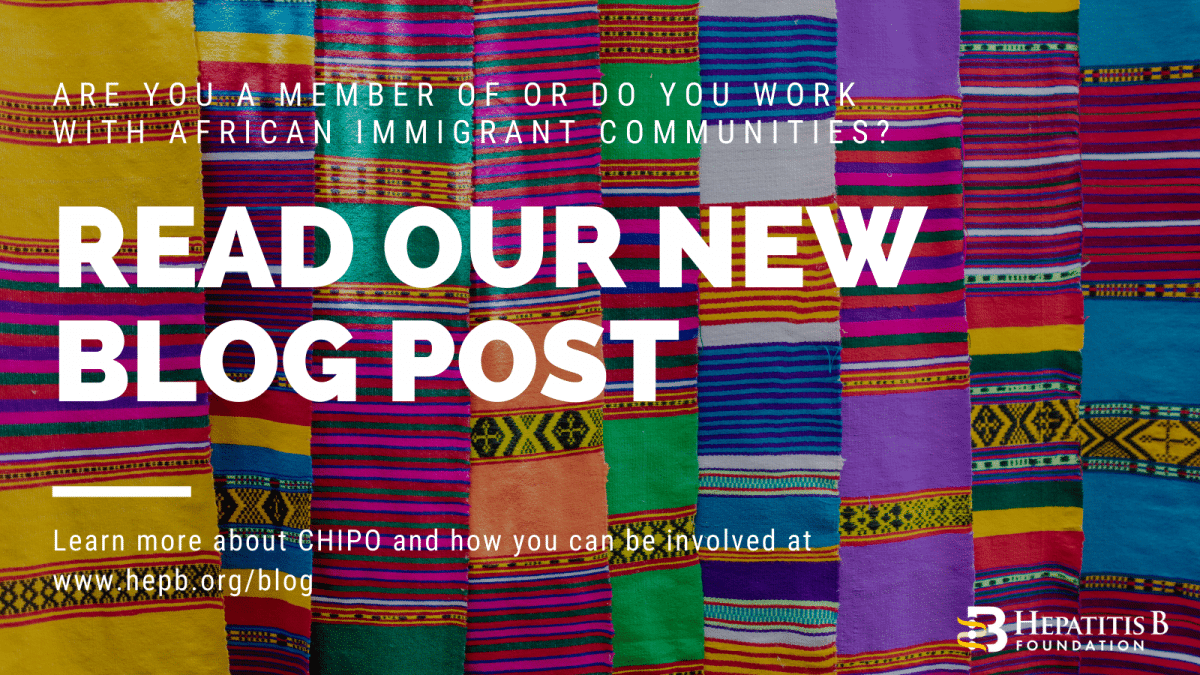
Are you a member of the African diaspora in the United States? Do you work for an organization that serves these communities? We would love for you to join CHIPO – the Coalition Against Hepatitis for People of African Origin! CHIPO is a national community coalition, co-founded and led by the Hepatitis B Foundation. Our members include a variety of individuals and organizations from all over the country, who are interested in and focused on addressing the high rates of hepatitis B among African communities in the US., which are disproportionately affected by hepatitis B and liver cancer. In some parts of the country, rates of chronic hepatitis B infection in African communities are estimated to range between 5 and 15% of people.
The purpose of CHIPO is to provide a space for an open exchange of ideas, best practices, and information about how to dismantle some of the many barriers that stand in the way of preventing, diagnosing, and treating chronic hepatitis B infection, and preventing liver cancer, in African immigrant communities. These barriers include a lack of disease awareness, high rates of stigma, limited access to healthcare and services, and the silent nature of the disease, which often does not present any symptoms until significant liver damage has occurred – a process which could take years or even decades. As a result, most African community members who have hepatitis B DO NOT KNOW that they are infected. This puts them at much greater risk for premature death from cirrhosis or liver cancer.
CHIPO, meaning “gift” in the Shona language, aims to disseminate accurate information about hepatitis B transmission, prevention, and treatment among community members, healthcare providers, and organizational leaders, and to improve the national capacity to raise hepatitis B awareness, testing, vaccination, and linkage to care among highly affected African communities. CHIPO also works to ensure that African immigrant communities are represented in HBV discussions and programs regionally and nationally. This is achieved through advocacy and the development of national and local partnerships. We currently have over 35 coalition partners around the U.S., dedicated to addressing viral hepatitis in African communities.
The activities of CHIPO are many and diverse. They include bimonthly virtual meetings, which often center around a presentation by a coalition member about measures or interventions that have been undertaken or research that has been done to achieve one of CHIPO’s objectives – namely improving awareness about and access to hepatitis B information, screening, vaccination, and linkage to follow-up care. Other activities include educational community events and presentations; supporting the design and implementation of initiatives to help accomplish CHIPO’s goals, such as the CDC Know Hepatitis B campaign (discussed below) and a recent grant from Bristol Myers Squibb to raise awareness about liver cancer and understanding about the link between hepatitis B and liver cancer in African immigrant communities; and promoting the work of coalition members locally and nationwide.
An example of a project for which CHIPO provided great support and guidance was the production of the first nationally available hepatitis B educational resources, specifically for African populations. Created in collaboration with the Centers for Disease Control and Prevention (CDC), these materials are part of a train-the-trainer-based model, and include a suite of materials, including a downloadable presentation on hepatitis B for community health workers, a printable flip chart for direct community education, and supporting fact sheets and resources. The presentation and flip chart have also been translated into Amharic, Arabic, French, and Swahili.
To read more about CHIPO, including previous blog posts, articles, and meeting minutes, and to access a full list of our members and the work they are doing around the country, visit our website.
Does this work sound interesting to you? Would you like to work with us to achieve lower rates of hepatitis B and liver cancer in African immigrant communities through increasing awareness, screening, vaccination, and linkage to care? Join us! Anyone is welcome to join CHIPO – contact the coordinator to get involved. We hope to see you on our next call!



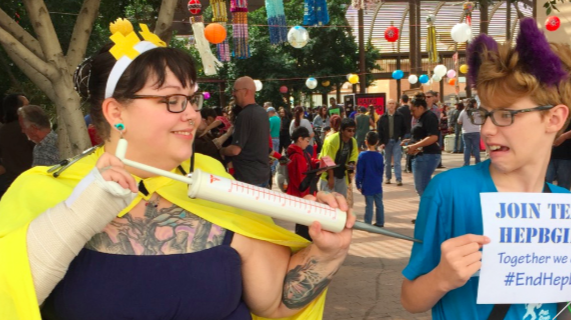
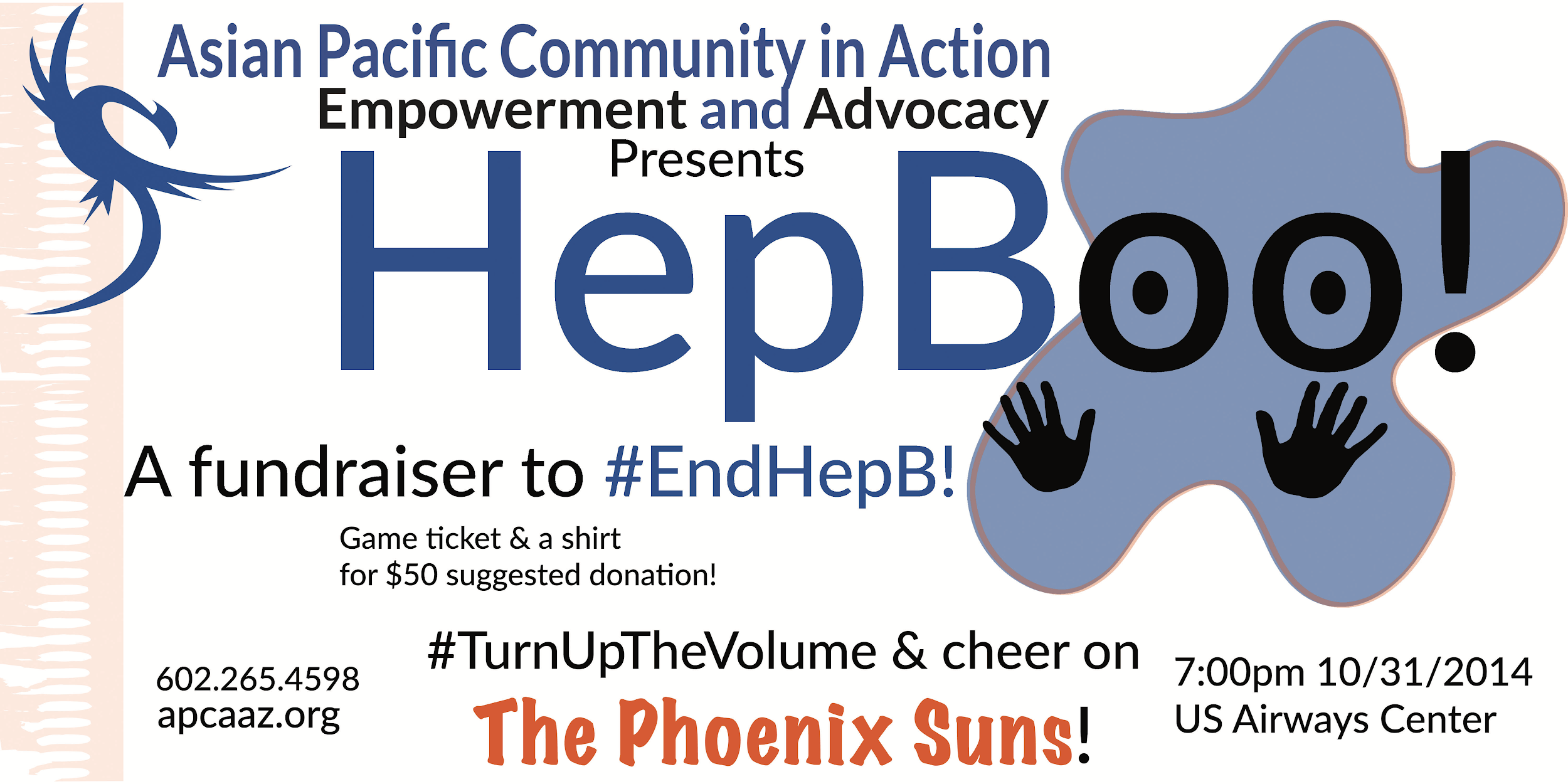
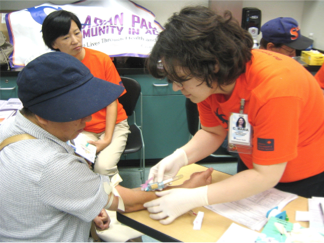 Arizona’s hepatitis B story
Arizona’s hepatitis B story 
 Layal Rabat is a third culture kid who has spent years practicing the fine art of parachuting into projects as the need for her skills arises. She takes an intersectional approach to her work and does not shy away from any cause where injustice is present and her contribution is welcomed and necessary. Her experience lies in project management, traditional and digital communications using all mediums from her own voice to videos to writing to tweeting, assembling audience-specific information for delivery in an infinite amount of ways. An infinitely curious researcher and an obsessive collector and assembler of information, she is often seen playing a supportive role in the background and amplifying the voices of those directly affected by injustice in her community. Fluent in English & Arabic, intermediate in Spanish & knows a tiny bit of Armenian. Current issues are immigrant rights and public health. With a BS in Psychology & an MA in Social Justice & Human Rights, she is currently working as the Empowerment & Advocacy Manager at the Asian Pacific Community in Action, and volunteering her time as IT/Web & Social Media Coordinator at Phoenix Allies for Community Health. She also volunteers with the Restoration Project, Phoenix, and serves as a board member with Sonoran Prevention Works. In her spare time, she enjoys listening to music (& karaoke), reading, writing, photography, and traveling.
Layal Rabat is a third culture kid who has spent years practicing the fine art of parachuting into projects as the need for her skills arises. She takes an intersectional approach to her work and does not shy away from any cause where injustice is present and her contribution is welcomed and necessary. Her experience lies in project management, traditional and digital communications using all mediums from her own voice to videos to writing to tweeting, assembling audience-specific information for delivery in an infinite amount of ways. An infinitely curious researcher and an obsessive collector and assembler of information, she is often seen playing a supportive role in the background and amplifying the voices of those directly affected by injustice in her community. Fluent in English & Arabic, intermediate in Spanish & knows a tiny bit of Armenian. Current issues are immigrant rights and public health. With a BS in Psychology & an MA in Social Justice & Human Rights, she is currently working as the Empowerment & Advocacy Manager at the Asian Pacific Community in Action, and volunteering her time as IT/Web & Social Media Coordinator at Phoenix Allies for Community Health. She also volunteers with the Restoration Project, Phoenix, and serves as a board member with Sonoran Prevention Works. In her spare time, she enjoys listening to music (& karaoke), reading, writing, photography, and traveling.